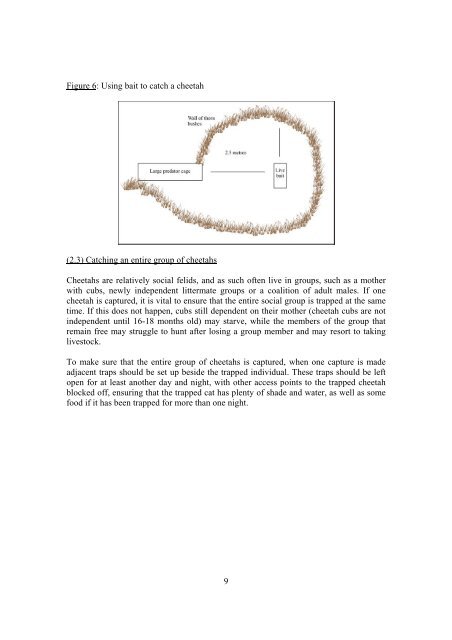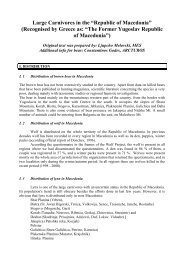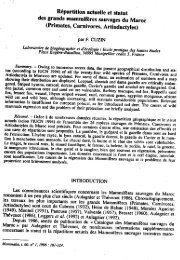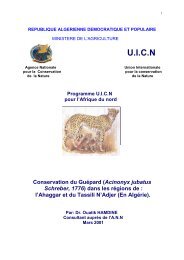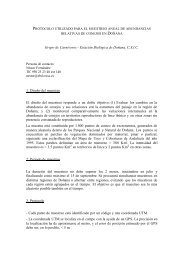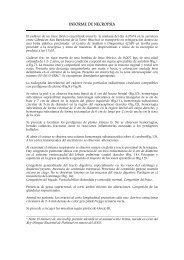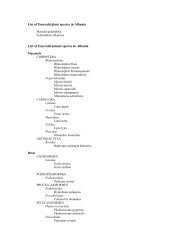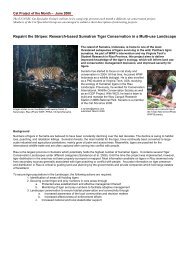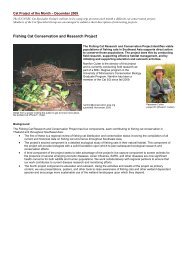cheetah capture and immobilisation handbook - Cat Specialist Group
cheetah capture and immobilisation handbook - Cat Specialist Group
cheetah capture and immobilisation handbook - Cat Specialist Group
You also want an ePaper? Increase the reach of your titles
YUMPU automatically turns print PDFs into web optimized ePapers that Google loves.
Figure 6: Using bait to catch a <strong>cheetah</strong><br />
(2.3) <strong>Cat</strong>ching an entire group of <strong>cheetah</strong>s<br />
Cheetahs are relatively social felids, <strong>and</strong> as such often live in groups, such as a mother<br />
with cubs, newly independent littermate groups or a coalition of adult males. If one<br />
<strong>cheetah</strong> is <strong>capture</strong>d, it is vital to ensure that the entire social group is trapped at the same<br />
time. If this does not happen, cubs still dependent on their mother (<strong>cheetah</strong> cubs are not<br />
independent until 16-18 months old) may starve, while the members of the group that<br />
remain free may struggle to hunt after losing a group member <strong>and</strong> may resort to taking<br />
livestock.<br />
To make sure that the entire group of <strong>cheetah</strong>s is <strong>capture</strong>d, when one <strong>capture</strong> is made<br />
adjacent traps should be set up beside the trapped individual. These traps should be left<br />
open for at least another day <strong>and</strong> night, with other access points to the trapped <strong>cheetah</strong><br />
blocked off, ensuring that the trapped cat has plenty of shade <strong>and</strong> water, as well as some<br />
food if it has been trapped for more than one night.<br />
9


